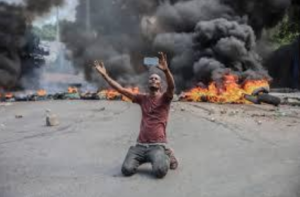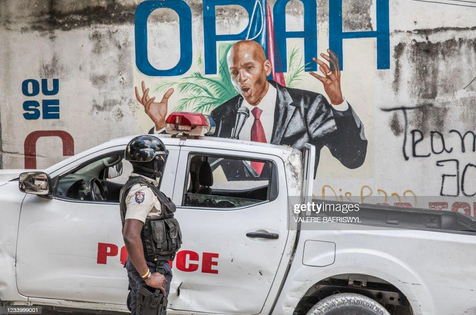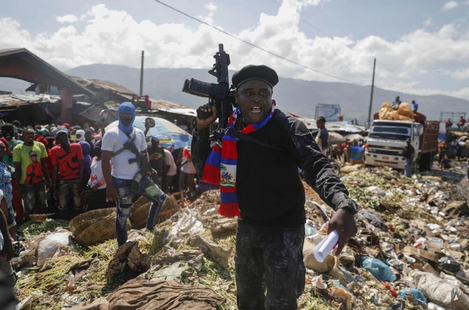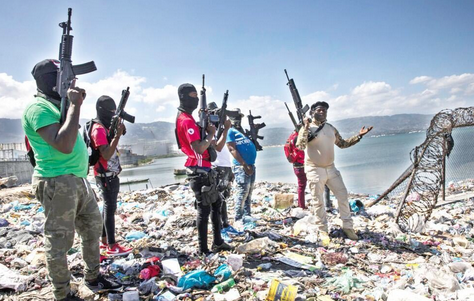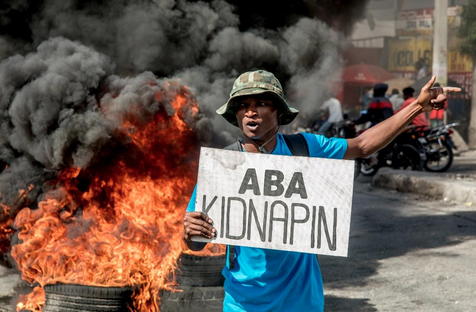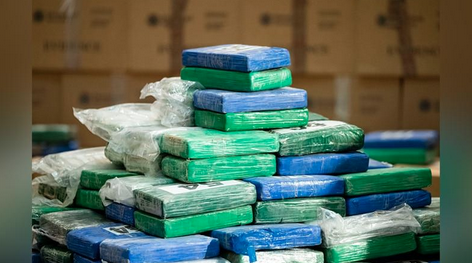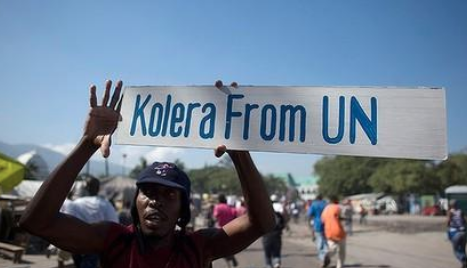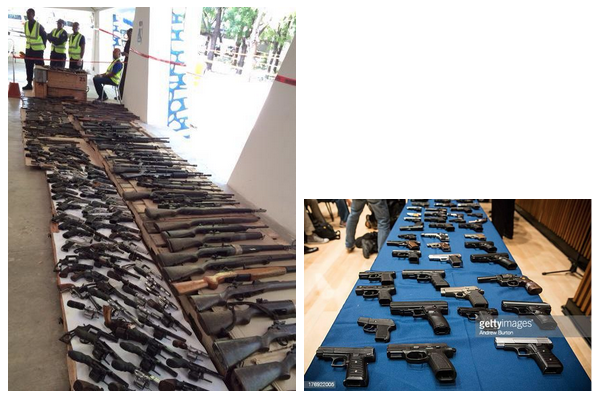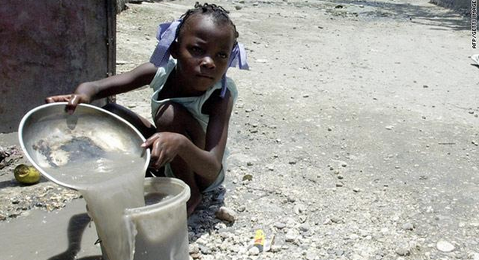GIVE ME A BREAK!!
HAITI HAS BEEN IN MELT-DOWN BECAUSE OF THE AMERICAN DESTRUCTION OF HAITI’S ARMY SINCE 1994. THE AMERICANS HAD PROMISED TO REBUILD AND RETRAIN THE FADH, AFTER GOVERNORS ISLAND, TO CONTROL ARISTIDE. THEN THEY BROKE THEIR WORD, AND EFFECTIVELY DESTROYED HAITI.
13,0000 HAITIANS NOW PAY THE PRICE FOR AMERICA’S DISHONESTY!
THIS ARTICLE SIMPLY REFLECTS THE RESULT OF AMERICA’S HISTORIC LACK ON INTEGRITY.
MICHEL COLLINS
__________________________________________
March 6, 2023
Miami Herald.com
U.N. details Haiti’s serious challenges with gangs, guns and drugs — and issues a warning By Jacqueline Charles Updated March 05, 2023
The United Nations is painting a grim picture of the challenges Haiti is facing right now. Among the warnings included in the report issued Friday by the United Nations Office on Drugs and Crime: ▪ Increasingly sophisticated and high-caliber firearms and ammunition are being trafficked into the crisis-wrecked Caribbean nation. ▪ The country remains a transshipment point for U.S. bound cocaine from Colombia, and cannabis from Jamaica. ▪ Haiti’s police, customs and coast guard agencies remain far too small in size, unevenly trained and under-resourced to provide security, or patrol its porous land and sea borders.
If left unchecked, the deteriorating cascading crises will further destabilize and could spill over into other countries in the region, the U.N. warns. Already, Haiti’s chronic instability — which deepened after the high-profile July 7, 2021 assassination of President Jovenel Moïse — is contributing to rising food prices, surging hunger, dangerous cholera outbreaks, deepening poverty, a collapsing healthcare system and the potential for a major migration exodus.
“Years of recovery and development investment are unraveling,” the report said. “Organized violence is being deployed as a well-defined strategy on the part of gangs and their backers to subdue populations and expand territorial control.” The report concludes that if the situation in Haiti continues to deteriorate and its security and development institutions disintegrate, “a significant international response will be required, including large-scale relief assistance and a stabilization or peace support operation.” Haiti faces many challenges to security that impact its borders and also put its population at risk, the U.N. found. An estimated 150 to 200 heavily armed criminal gangs are targeting ports, highways, critical infrastructure, customs offices, police stations, court houses, prisons, businesses and neighborhoods.
“Virtually every metric of insecurity, from homicide, sexual violence and kidnapping to the killing of police and migration out of the country —is trending upward,” the U.N. said. Another police substation — this one in the well-to-do Fort-Jacques neighborhood in commune of Kenskoff in the hills above Port-au-Prince — was set ablaze this week.
In the last 72 hours, two Haitian police officers, including a former inspector general, were also kidnapped. The latest abductions have raised concerns that ongoing operations to crackdown on gangs may now be further compromised. One of the kidnapped officers was in possession of his police radio at the time of his abduction.
Meanwhile, the porous borders, which include 1,100 miles of coastline and 243 miles of land bordering with the neighboring Dominican Republic — “are severely challenging” the ability of the ill-equipped, understaffed police force, as well as customs, border patrols and Haitian Coast Guard, all of whom are increasingly being targeted by gangs. The threat of kidnapping and ransom is ever present. “Haiti’s customs agents are operating in a context of extreme insecurity,” the report noted. “According to the director general of customs, multiple offices have been sacked and forced to close since September 2022, with several officials forced to abandon their posts.”
Customs offices in Port-au-Prince, Saint-Marc and Gonaïves, along with the Léogâne road checkpoint, have all been vandalized, the report noted. The U.N.’s assessment of the scope, scale and dynamics of firearms and drug trafficking in Haiti, including sources, routes, vectors and destinations, was based on published and unpublished information and 45 interviews conducted by the United Nations Office on Drugs and Crime with representatives of the Haitian government, bilateral and multilateral agencies, subject matter experts, and Haitian civil society.
The report says that a recent poll, commissioned by a Port-au-Prince based organization shows that Haitians are no longer bristling at the idea of an international force and some 70% support external security assistance, especially those living in gang-controlled areas. Still, in the absence of such an international security force or agreement over its deployment within the international community, the United States, Canada, France and now the 15-member Caribbean Community, known as CARICOM, are focusing their efforts on bolstering the Haiti National Police’s capacities to deter and suppress armed gangs, including the trafficking of firearms.
But the HNP, whose formation in 1994 coincided with the disbanding of the Haitian armed forces.
The HNP has been hobbled by its mandate, leadership, capacity and budgetary constraints, the U.N. argues. “One persistent deficiency relates to the management and accountability over existing firearms holdings of law enforcement officers and stores of seized weapons,” the report said, raising a long-standing concern in U.S. circles over the disappearance of police weapons and them ending up in hands of criminal gangs.
The most serious challenge facing the national police is its lack of strength — which the United States says should be around 22,000 cops — and its lack of resources.
The HNP has a ratio of 1.06 officers per 1,000 residents — well below the 2.2 per 1,000 recommended by the U.N. The U.N.’s political mission in Haiti says the force actually consists of fewer than 9,000 active duty officers. Haiti’s population is roughly 12 million. Regardless of the true number, everyone agrees that police’s ability to be effective is hampered by their uneven operational presence across the country, among other factors.
A sizable share of the officers are in the capital as well as the specialized units.
Also poor allocation of police who have been assigned to provide protection to senior government officials, for example, has further degraded the force’s effectiveness. “With the exception of a handful of staff stationed at Haiti’s two international airports and selected border crossings, there are virtually none policing key air, land and maritime entry and exit points,” the report said. “The HNP also struggles to manage, share and analyze data within the organization, much less across government agencies.” Other crime and corruption fighting agencies face similar challenges. The Haitian Coast Guard, which is under the Haiti National Police, has just 181 officers and had, of its 12 vessels, just a single operational boat, at the time of reporting. Others were either undergoing repairs in the United States or just not working.
The country’s anti-narcotics police brigade, known as BLTS, is also under-resourced and under-staffed. It has just one functioning boat for maritime interdiction and only 317 personnel. The unit “is severely under-resourced and over-stretched,” the report said, noting that all of these shortfalls are contributing to a weak chain of custody over seized contraband, including drugs and firearms.
Arms trafficking – Haiti doesn’t manufacture guns.
Most of the weapons coming illegally into the country are from the United States, which has an arms embargo preventing the police and government from easily purchasing guns.
While a 2020 report by Haiti’s disarmament commission estimated there could be as many as 500,000 small arms in the country, the U.N. said the “absolute number of weapons in Haiti may never be known.” Even still, “the vast majority in circulation are believed to be illegal.” “According to the Superior Council of the National Police, the HNP registered just 38,000 ‘legal’ firearms in 2015, less than 15% of the estimated national stock at the time,” the report said. “Assuming these figures are remotely accurate, Haiti’s law enforcement agents are outgunned by Haitian residents, private security company personnel and armed gangs.”
For instance, while drugs are more likely to enter via the northern and southern coast of Haiti — notably the city of Les Cayes, Jacmel and Jérémie — the guns and bullets are mostly being funneled through the western and northwestern coasts including Port-au-Prince and Port-de-Paix, where there were two major seizures in 2021.
“The latest uptick in firearm seizures together with intelligence and law enforcement reporting suggests that firearms trafficking between the U.S. and Haiti is surging,” the report said. According to the U.N., firearms and ammunition typically enter Haiti via land and in cargo ships from Florida, and drugs usually transit the country from seaports, airports and across poorly monitored border points. The weapons and ammunition make their way to gang members and private residents through intermediaries, often through public and private ports and porous checkpoints.
Meanwhile, the cocaine produced in Colombia and the cannabis from Jamaica is shipped directly from those countries or pass via the neighboring Bahamas or Turks and Caicos Islands and Venezuela. From Haiti they are shipped to the Dominican Republic, Western Europe and, primarily, the United States. Drugs, the report said, are shipped out and are also shared among the rank and file of gangs and serve a modest demand in larger Haitian cities.
Haiti has long served as a transshipment hub, but the U.N. fears that its increased instability may be influencing its attractiveness to traffickers. “While countries such as the U.S.,Canada and France have invested in strengthening local customs and police capacities, particularly in the north of the country, Haiti lacks meaningful surveillance and patrol infrastructure at the border,” the report said. “The continued high levels of cocaine production in source countries and increased gang influence in Haiti are additional factors that suggest that the HNP may only be capturing a modest share of the drugs passing through the country.”
COMMENT: HAITIAN-TRUTH.ORG
